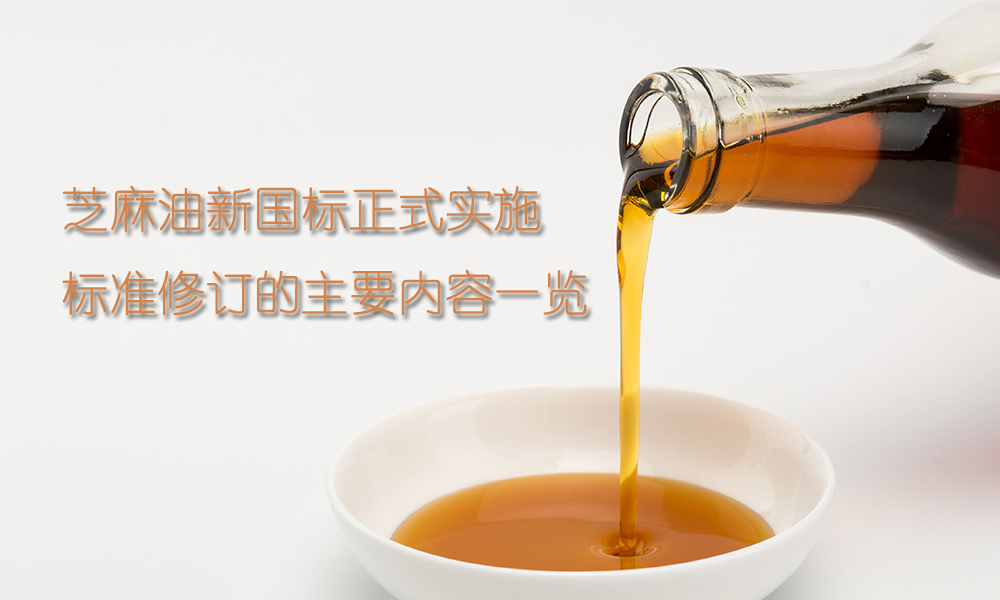
December 1, The new national standard “GB/T8233-2018 Sesame Oil” has been officially implemented to replace “GB/T8233-2008 Sesame Oil”. The new standards modify many quality indicators and stipulate that sesame sesame oil, ground sesame oil and refined sesame oil are all finished sesame oils that can be eaten directly.
Sesame oil is one of the main edible oils in my country. Its quality is related to consumer health and product market credibility. Wang Xuede, a participant in the standard revision and a professor at the School of Cereals, Oils and Food of Henan University of Technology, told reporters that “GB/T8233-1987 Sesame Oil” and “GB/T8233-2008 Sesame Oil” provide important guidance for the production, processing and product sales of sesame oil in different periods in our country. Quality technical basis. With the change of people’s consumption concept of edible oil and the advancement of oil processing technology, sesame oil production technology is developing in the direction of safety and health, nutrition and health, co-production and processing of sesame oil and sesame protein, such as the moderate roasting technology of sesame seeds in the production process of sesame sesame oil. It can prevent and control benzopyrene (an indirect carcinogen). Therefore, based on the current improvement and development of sesame oil production technology, the increase in types of sesame oil products, and the improvement of quality, it is very necessary to revise the original sesame oil standards.
What are the main contents of this standard revision?
Relevant experts said that the first is the Some terms and terms in the original standard have been modified. The finished sesame oil in the original standard is modified to refined sesame oil. Because in addition to crude sesame oil that cannot be directly eaten, sesame sesame oil, ground sesame oil and refined sesame oil are all finished sesame oil that can be directly eaten, and the accurate translation of the English “refinedsesameoil” corresponding to “finished sesame oil” in the original standard should also be It’s “refined sesame oil”.
Second, the classification of sesame oil in the original standard has been partially modified. In the original standard, sesame oil was divided into three categories: sesame sesame oil, sesame crude oil and finished sesame oil. This time it was revised to four categories: sesame crude oil, sesame sesame oil, ground sesame sesame oil and refined sesame oil.
Third, the “characteristic indicators” in the original standard were modified to “basic composition and main physical parameters”, and the unsaponifiable matter content indicator was canceled; the fatty acid composition was partially modified, and the fatty acid content was Fatty acid types less than 1% are cancelled, and the stearic acid content is modified to 4.5%-6.9%.
Fourth, some quality indicators have been modified. The requirements for soap content and freezing test in the quality index of finished sesame oil (now modified to refined sesame oil) in the original standard have been cancelled; the moisture and volatile content of first-grade sesame sesame oil have been revised from ≤0.1% in the original standard to ≤0.2% ; The insoluble impurities of sesame sesame oil are revised from the original standard of ≤0.1% to ≤0.05%; the acid value (KOH)/(mg/g) of first- and second-level sesame sesame oils are revised from ≤2 and ≤4 to ≤2.5 and ≤ 3; The color was changed from Lovibond color comparison method to sensory evaluation method.
Introduction to stearic acid in the modified content:
It is understood: stearic acid, also known as ten Octacid is a fatty acid widely found in nature. Almost all oils contain stearic acid in varying amounts. The content is higher in animal fats. For example, the content in butter can reach 24%, and the content in vegetable oils is smaller. , tea oil is 0.8%, palm oil is 6%, but the content of cocoa butter is as high as 34%. There are two main production methods for industrial stearic acid: fractionation method and pressing method. A decomposing agent is added to the hardened oil, and then it is hydrolyzed to obtain crude fatty acids, which are then washed, distilled, and decolorized to obtain the finished product, while glycerol is produced as a by-product.
It is a white flake, bead or block solid at room temperature. It is composed of saturated fatty acids mainly C16 and C18. It is insoluble in water, slightly soluble in benzene and carbon disulfide, easily soluble in hot ethanol, non-toxic and tasteless, and has the general chemical properties of organic carboxylic acids.
This product is used as a raw material for lubricants, defoaming agents and food additives in the food industry.



 微信扫一扫打赏
微信扫一扫打赏
